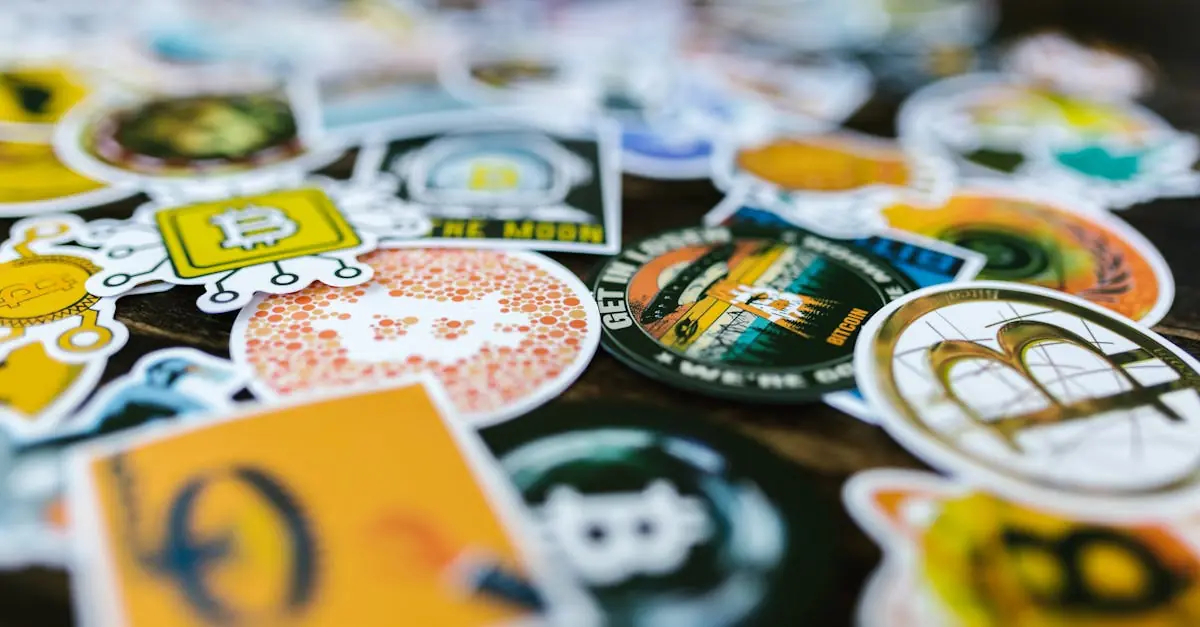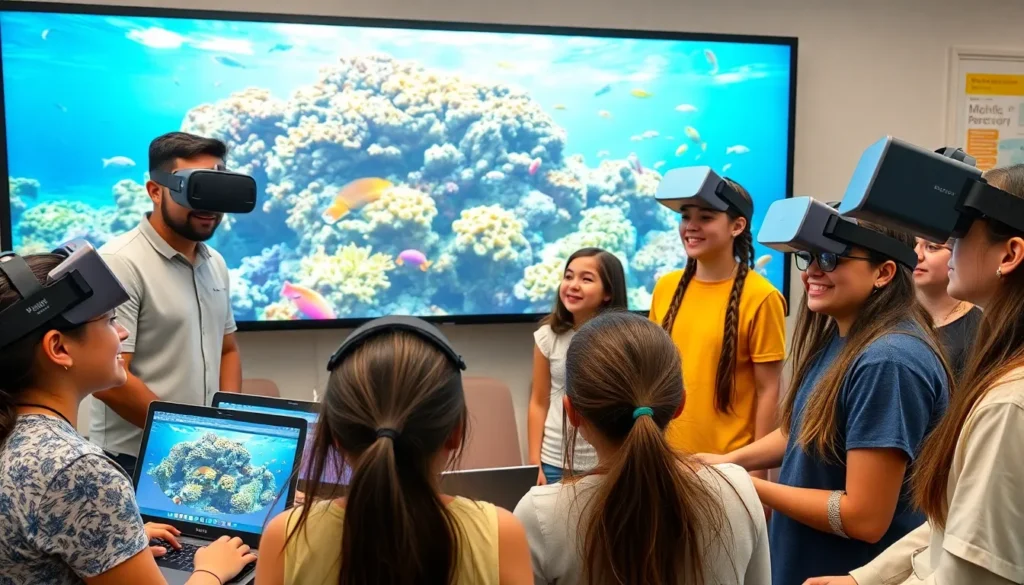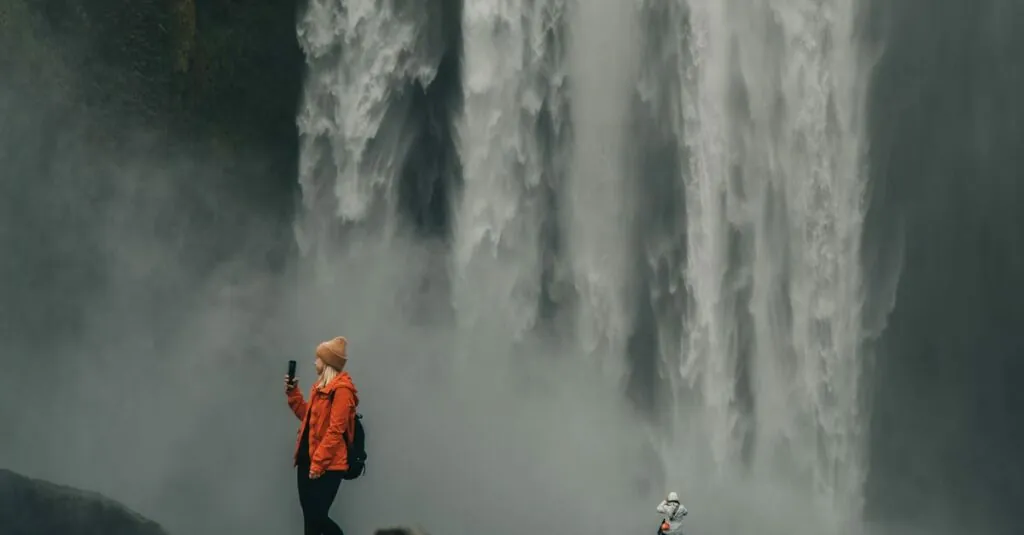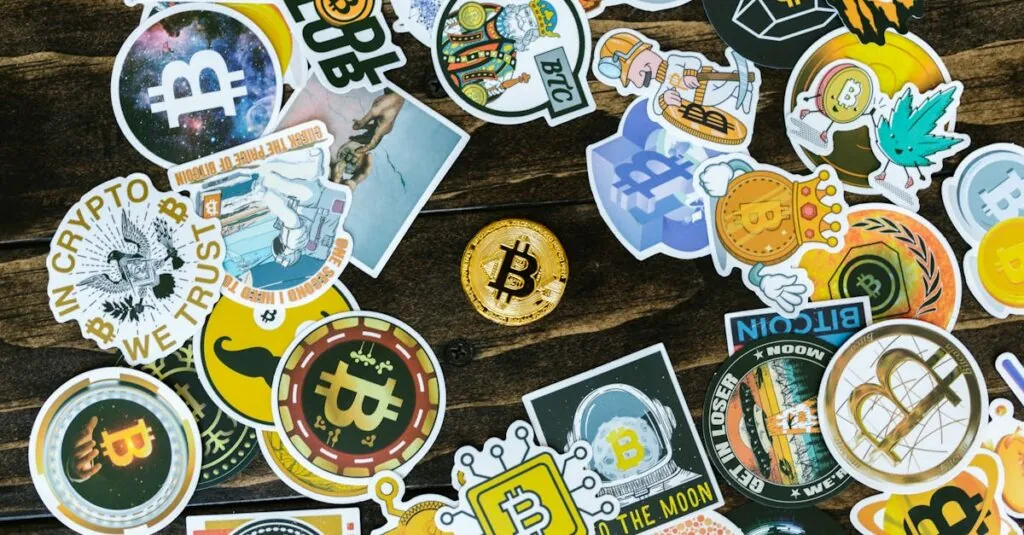Table of Contents
ToggleIn a world where digital art once felt like a fleeting whisper, blockchain art has burst onto the scene like a confetti cannon at a surprise party. It’s not just a buzzword; it’s a revolution that’s turning traditional art on its head. Imagine owning a piece of art that’s as unique as your Aunt Edna’s infamous fruitcake—except this one won’t spoil and can’t be replicated.
Blockchain art blends creativity with cutting-edge technology, creating a space where artists can thrive and collectors can invest with confidence. Forget about dusty galleries and overpriced auctions; the future of art is here, and it’s as vibrant as a neon sign in a dark alley. Dive into the colorful world of blockchain art, where every pixel is a potential masterpiece waiting to be discovered.
Understanding Blockchain Art
Blockchain art represents a new frontier in the creative sector, combining artistry with advanced technology. This innovative approach redefines ownership in the digital age.
What Is Blockchain Art?
Blockchain art refers to digital artworks that utilize blockchain technology to verify ownership and authenticity. Each piece is stored as a non-fungible token (NFT), ensuring its uniqueness. Ownership records exist on a decentralized ledger, eliminating the risk of forgery. Artists create NFTs that may encompass various forms, like images, animations, or music. Collectors purchase these tokens to secure their investment and demonstrate ownership. Popular platforms for trading blockchain art include OpenSea and Rarible.
How Does It Work?
Blockchain art operates through a process that connects artists and collectors without intermediaries. Artists mint their creations into NFTs using blockchain networks, with Ethereum being the most common. Smart contracts govern transactions and set rules for royalties upon resale. Every transaction gets recorded on the blockchain, ensuring transparency and security. Collectors can buy, sell, or trade NFTs, maintaining a direct link to creators. Once acquired, the NFT proves ownership, while the artwork itself may exist freely across the internet. This innovation empowers artists and offers collectors a new paradigm of engagement.
The Rise of NFTs
NFTs have gained significant attention, changing how art is created, bought, and sold. The emergence of these tokens signifies a turning point in the art world.
The Connection Between Blockchain and Art
Blockchain technology forms the backbone of NFTs, ensuring reliability and transparency. Immutable records stored on the blockchain verify the ownership of digital art pieces. Artists enjoy control over their work, while collectors appreciate the authenticity ensured by the technology. Smart contracts play a crucial role, allowing artists to receive royalties from future sales. This direct connection between creators and buyers fosters a new level of trust in art transactions.
Notable NFT Artists and Works
Numerous artists have made a mark in the NFT space, showcasing remarkable creations. Beeple’s “Everydays: The First 5000 Days” sold for $69 million, capturing global attention. Other notable artists include Pak and Trevor Jones, who consistently push the boundaries of digital art. Each artist’s work highlights unique styles and innovative concepts, illustrating the diversity within the NFT landscape. Collectors can explore various works, from animated visuals to digital sculptures, expanding their appreciation for contemporary art.
Advantages of Blockchain Art
Blockchain art presents several unique advantages, enhancing the experience for both artists and collectors in the digital realm.
Provenance and Ownership
Provenance becomes transparent with blockchain technology. Each artwork’s history is recorded immutably, allowing buyers to verify authenticity and ownership easily. This ensures that collectors know precisely what they own. Artists gain security over their work, preventing unauthorized reproductions. Uniqueness is preserved, as each piece exists within its own digital space as a non-fungible token (NFT). Multiple sales histories and transaction records create a reliable method for establishing value. The clarity offered by blockchain diminishes disputes over ownership and paves the way for trust within the community.
Accessibility and Market Reach
Accessibility defines the landscape of blockchain art. Artists can reach a global audience without the limitations of traditional galleries. Collectors gain exposure to a broad range of artworks, expanding their options significantly. The online nature of platforms hosting NFTs encourages diversity, showcasing both established and emerging talents. As transactions occur on blockchain networks, barriers such as geographic location or high fees diminish. Access to art becomes more inclusive, enabling collectors to support artists directly. This shift towards digital ownership also encourages innovation, leading to fresh styles and concepts within the art world.
Challenges in Blockchain Art
Blockchain art faces significant challenges, impacting its growth and acceptance in the mainstream art world.
Environmental Concerns
A notable concern involves the environmental impact of blockchain technology. Many blockchains, including Ethereum, rely on energy-intensive proof-of-work algorithms. Reports indicate that a single NFT transaction can generate a carbon footprint comparable to the energy consumption of an average household over several days. These environmental effects have driven artists and collectors to seek more sustainable solutions. Layer 2 solutions and proof-of-stake protocols have emerged, aiming to lower energy usage while still enabling secure transactions. Consequently, the industry now must navigate the balance between innovation and environmental responsibility.
Market Volatility
Market volatility poses another challenge for blockchain art. The prices of NFTs can fluctuate dramatically, leading to financial uncertainty for artists and collectors alike. For instance, an artwork might sell for millions one day, only to drop significantly the next. This volatility causes hesitation among potential buyers, who may fear overpaying. Additionally, rapid market changes can affect artists’ income stability as well. Maintaining interest and value in the long term has become crucial for the ecosystem. Therefore, understanding market trends and engaging with communities can help mitigate some of these risks.
Future of Blockchain Art
The future of blockchain art holds immense potential, shaping the artistic landscape in profound ways. Artists and collectors alike will see a shift towards more innovative practices and technology-driven solutions.
Trends to Watch
Interoperability among various blockchains is gaining traction. Artists may increasingly utilize cross-platform capabilities to reach wider audiences more efficiently. Emerging markets in developing countries present new opportunities for unique creations. Eco-friendly blockchain solutions will likely take center stage, addressing concerns about environmental impact. Already, some projects focus on reducing carbon footprints, appealing to eco-conscious creators and collectors. Increased collaborations between artists and tech companies may result in unique hybrid art forms. As the market evolves, trends such as augmented reality art and virtual galleries are likely to become standard.
The Role of Technology in Art Evolution
Technology significantly influences art evolution, pushing boundaries further than before. Blockchain serves as the backbone, ensuring authenticity and transparency. Smart contracts automate transactions seamlessly, fostering trust between artists and collectors. Additionally, digital platforms enable artists to monetize their work without traditional intermediaries. Community engagement becomes essential, as artists and fans connect through social media and decentralized platforms. Innovations such as generative art techniques showcase how technology inspires new artistic expressions. As these advancements continue, the fusion of creativity and technology will reshape the art world.
Blockchain art is redefining the art landscape by merging creativity with cutting-edge technology. It offers artists unprecedented control and collectors a reliable way to verify authenticity and ownership. As the ecosystem evolves, challenges like environmental impact and market volatility must be addressed for sustained growth.
The future looks promising with innovations in eco-friendly solutions and cross-platform capabilities. As artists and collectors embrace this new frontier, the potential for unique artistic expressions continues to expand. The interplay between technology and art will undoubtedly lead to transformative experiences that engage a global audience.










